Wednesday was the first day of the Year of the Snake, an animal with special attributes in Chinese culture, but beyond the Chinese zodiac, Taiwan is home to many types of the limbless reptiles.
In Chinese lore, the snake symbolizes wisdom, dexterity and charm, but knowing how to discern different species of snake is a useful skill — particularly as some are venomous, the Ministry of Agriculture (MOA) wrote on Facebook.
Taiwan’s diverse natural environment has given rise to a rich variety of native snakes, with the six most common types being the Chinese cobra, the Chinese green tree viper, the many-banded krait, the beauty rat snake, the king rat snake and the Oriental rat snake, it said.
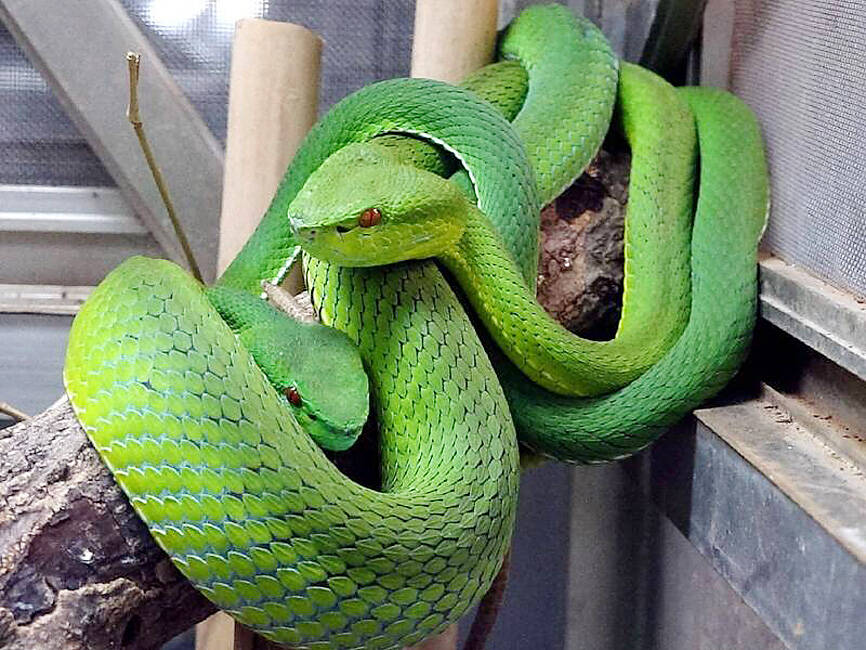
Photo courtesy of Taipei Zoo
The snakes — which mostly feed on insects, mollusks, birds, amphibians, reptiles and small mammals — are essential to maintaining Taiwan’s ecological balance, but some are threatened or endangered due to human activity or past attempts to eradicate them.
While the vast majority of snakes in Taiwan are nonvenomous or only slightly venomous, and do not pose a high threat to humans, some — such as the many-banded krait and hundred-pace snake — are highly venomous, and their bites require medical treatment, it said.
One of Taiwan’s venomous snake species is the Chinese cobra, which can be found in Lienchiang County (Matsu), and all throughout Taiwan proper at altitudes below 1,000m, particularly in southern parts of the nation.

Photo courtesy of the Nantou County Fire Bureau
They are most commonly found in the plains, on farmland and in forests, but occasionally enter residential areas.
When a cobra is threatened or disturbed, it quickly raises the front half of its body and flares its hood. It would also make a loud hissing sound before attacking.
Conversely, the beauty rat snake, a nonvenomous and docile snake, is found in low and medium-altitude areas below 2,000m across Taiwan proper, the ministry said.
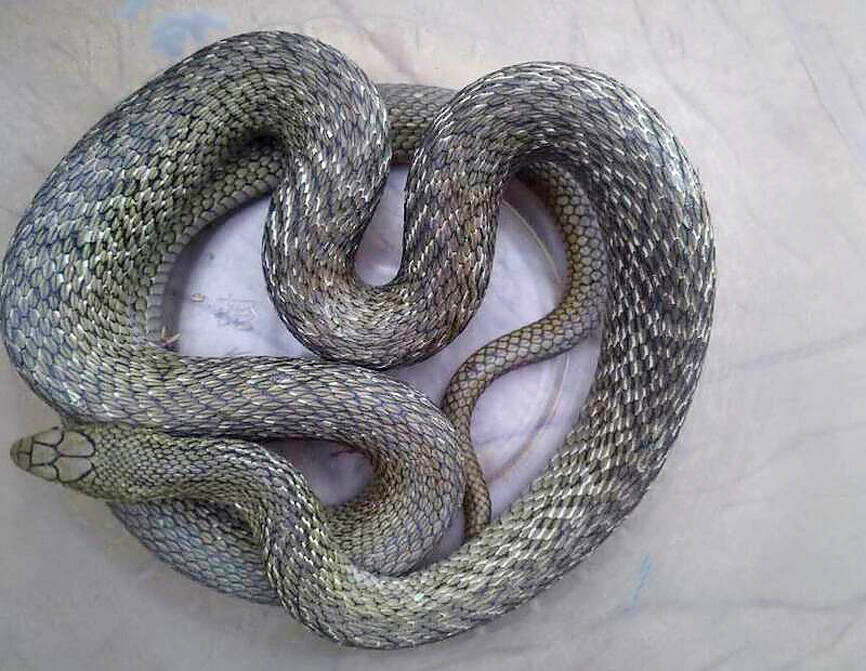
Photo courtesy of the Changhua County Fire Bureau
It is characterized by a black longitudinal band extending backward from behind each of its eyes, two longitudinal yellow stripes on the back of its posterior segment and regular black diamond-shaped spots on its front segment.
This subspecies is endemic to Taiwan and is the second-most common snake on Taiwan proper, the ministry said, adding that it is mainly active during the day and can be found in grasslands, forests, the lowland areas of the mountains, and around residential areas.
The Chinese green tree viper is another venomous snake, and is responsible for the majority of human bites in the country, it said.
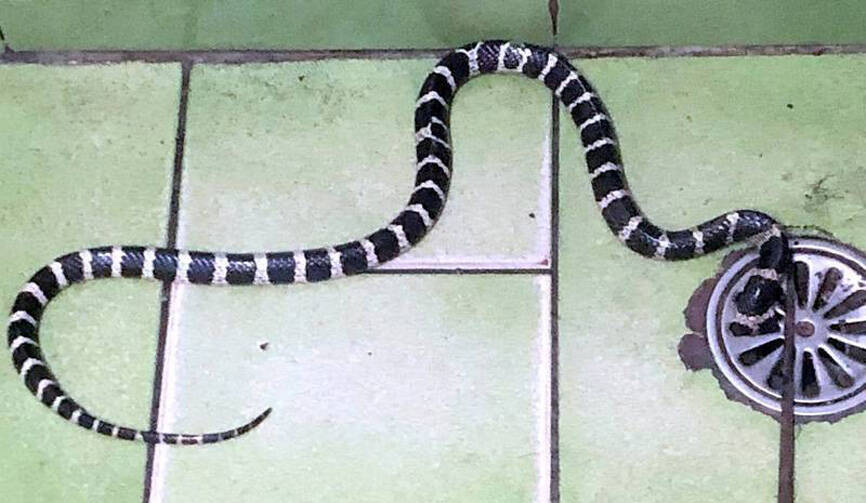
Photo courtesy of the Nantou County Fire Bureau
It is widely distributed in low-altitude areas below 2,000m throughout Taiwan proper, and on Taitung County’s Green Island (綠島) and Orchid Island (Lanyu, 蘭嶼). It can be identified by its bright green color, vertical pupils, brick-red tail end, triangular head and white lines that follow the length of its body.
While the Chinese green tree viper is not a particularly aggressive snake, it will bite if provoked or disturbed, and is responsible for the majority of human bites in Taiwan, the ministry said.
As its body is the same color as many plants, farmers and field workers often fail to notice them, and disturb the reptiles while they are resting, resulting in bites, it said.

Photo courtesy of Taipei Zoo
Its venom contains hemorrhagic toxins, and the bite wound would swell and bleed.
Ministry officials said that people should not to panic or drive away Chinese green tree vipers encountered in the wild.
The snakes can be found almost year-round, and are most often seen following heavy rainfall.
The king rat snake is a nonvenomous species that uses constriction to kill its prey. It is found throughout Taiwan, and can be identified by white and black spots along its body. The snake is named for the shape that forms on the heads of adults that looks similar to the Chinese character for “king.”
The king rat snake has a reputation among farmers for the large number of rats it consumes, the ministry said.
It is often found in grasslands, rice fields and farmhouses. In Taiwan, the snake is often referred to as the “stink snake,” due to its well-developed anal glands that emit a strong foul odor.
The many-banded krait is among the most venomous land snakes in the world.
It has a round head, wide black links, and hexagonal scales in the center of its back, and is found in forests, bamboo forests, swamps and near homes below 1,000m above sea level throughout Taiwan, Kinmen County and Matsu, the ministry said.
Its body is made up of wide black rings and narrow white rings. Although its venom is highly toxic to humans, it is not an overly aggressive snake, and would only attack if threatened or provoked, it said, adding that if disturbed, the snake would flee quickly or coil its body into a figure eight and bury its head under its body.
Like other species of rat snake, the Oriental rat snake is nonvenomous and is best known for its role in controlling rat populations, it said.
It is widely distributed in areas below 1,500m above sea level, in Taiwan proper, and Kinmen and Matsu. It is identifiable by its large eyes and the black rings around its eyes. It is the most common snake species on Taiwan proper and can be found in forests, farmland and wetlands, and is occasionally seen in residential areas.
The adult Oriental rat snake tends to be aggressive and moves quickly, and when provoked will hiss, raise its head and puff up its neck. It feeds mainly on mice and is the most powerful natural predator of rodents in Taiwan.
In most cases, people would not encounter snakes in their daily lives, but if a person does, they should remain calm, the ministry said.
“If you are unfortunate enough to be bitten by a snake, remember the snake’s appearance, keep the wound below the heart, avoid cutting the wound or using your mouth to extract the venom, and seek medical assistance as soon as possible,” it said.
“When hiking or engaging in outdoor activities at night, you should wear long sleeves, long pants and closed shoes. Avoid shorts, sandals and other clothing to reduce the risk of an accidental snake bite,” it said.
Snakes are an important part of the ecosystem, and their peaceful coexistence with humans helps to ensure the sustainability of natural resources, it said.
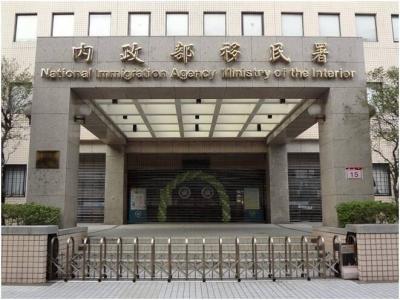
A small number of Taiwanese this year lost their citizenship rights after traveling in China and obtaining a one-time Chinese passport to cross the border into Russia, a source said today. The people signed up through Chinese travel agencies for tours of neighboring Russia with companies claiming they could obtain Russian visas and fast-track border clearance, the source said on condition of anonymity. The travelers were actually issued one-time-use Chinese passports, they said. Taiwanese are prohibited from holding a Chinese passport or household registration. If found to have a Chinese ID, they may lose their resident status under Article 9-1
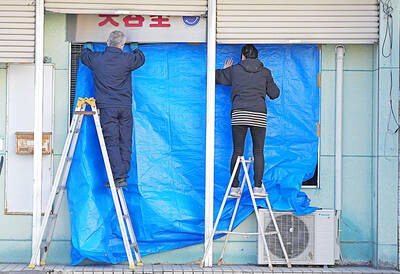
Taiwanese were praised for their composure after a video filmed by Taiwanese tourists capturing the moment a magnitude 7.5 earthquake struck Japan’s Aomori Prefecture went viral on social media. The video shows a hotel room shaking violently amid Monday’s quake, with objects falling to the ground. Two Taiwanese began filming with their mobile phones, while two others held the sides of a TV to prevent it from falling. When the shaking stopped, the pair calmly took down the TV and laid it flat on a tatami mat, the video shows. The video also captured the group talking about the safety of their companions bathing

PROBLEMATIC APP: Citing more than 1,000 fraud cases, the government is taking the app down for a year, but opposition voices are calling it censorship Chinese Nationalist Party (KMT) Chairwoman Cheng Li-wun (鄭麗文) yesterday decried a government plan to suspend access to Chinese social media platform Xiaohongshu (小紅書) for one year as censorship, while the Presidential Office backed the plan. The Ministry of the Interior on Thursday cited security risks and accusations that the Instagram-like app, known as Rednote in English, had figured in more than 1,700 fraud cases since last year. The company, which has about 3 million users in Taiwan, has not yet responded to requests for comment. “Many people online are already asking ‘How to climb over the firewall to access Xiaohongshu,’” Cheng posted on

A classified Pentagon-produced, multiyear assessment — the Overmatch brief — highlighted unreported Chinese capabilities to destroy US military assets and identified US supply chain choke points, painting a disturbing picture of waning US military might, a New York Times editorial published on Monday said. US Secretary of Defense Pete Hegseth’s comments in November last year that “we lose every time” in Pentagon-conducted war games pitting the US against China further highlighted the uncertainty about the US’ capability to intervene in the event of a Chinese invasion of Taiwan. “It shows the Pentagon’s overreliance on expensive, vulnerable weapons as adversaries field cheap, technologically